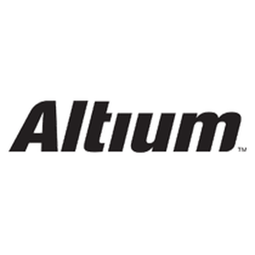Technology Category
- Application Infrastructure & Middleware - Middleware, SDKs & Libraries
- Networks & Connectivity - 5G
Applicable Industries
- Electronics
- National Security & Defense
Applicable Functions
- Procurement
- Product Research & Development
Use Cases
- Visual Quality Detection
Services
- System Integration
- Testing & Certification
About The Customer
DKB Resources is an electronics design service bureau based in Santa Barbara, California. With over a decade of experience in developing specialized PCBs for research and development programs, including those in the space and defense sector, DKB Resources has built a reputation for customer service, productivity, efficiency, and quality. The company's clientele includes some of the world's most recognizable organizations such as NASA's Jet Propulsion Laboratory (JPL), Raytheon, Teradyne, and Northrop Grumman. The company prides itself on a 99.8% 'first time turn on' success rate, demonstrating its commitment to quality and reliability.
The Challenge
DKB Resources, a successful electronics service bureau, has carved a niche in developing specialized Printed Circuit Boards (PCBs) for organizations in the space and military industry. However, this commitment comes with a significant responsibility. The company must work within the strict requirements of its clients, design using specific sets of standards and guidelines, and ensure that its designs can withstand harsh environments like space. This necessitates a strong emphasis on quality, reliability, documentation, and good communication with clients. The company's work is checked by program managers, procurement managers, and administrative support managers, each with their own data requirements and document standards. This complex process is likened to being multilingual by Darya Bronston, President of DKB Resources. The company's line of work leaves no room for error, as people's lives could depend on the reliability of a design.
The Solution
To manage this complex process, DKB Resources utilizes Altium's data management system. This system allows the company's engineers to develop a series of design rules and libraries that are relevant to each of its clients. It also enables the design team to reuse design elements while maintaining quality and reliability. A prime example of how DKB Resources leverages this system is its collection of golden libraries and golden templates that are specific to each customer. For instance, for the Jet Propulsion Laboratory (JPL), DKB Resources was provided a 600-plus page rule book of requirements and guidelines. The company used Altium Designer to recreate these applicable rules in a Design Rule Check (DRC) checklist to ensure adherence to JPL requirements. This commitment to quality and adherence to client-specific requirements sets DKB Resources apart from its competitors.
Operational Impact
Quantitative Benefit

Case Study missing?
Start adding your own!
Register with your work email and create a new case study profile for your business.
Related Case Studies.

Case Study
Remote Temperature Monitoring of Perishable Goods Saves Money
RMONI was facing temperature monitoring challenges in a cold chain business. A cold chain must be established and maintained to ensure goods have been properly refrigerated during every step of the process, making temperature monitoring a critical business function. Manual registration practice can be very costly, labor intensive and prone to mistakes.

Case Study
Predictive maintenance in Schneider Electric
Schneider Electric Le Vaudreuil factory in France is recognized by the World Economic Forum as one of the world’s top nine most advanced “lighthouse” sites, applying Fourth Industrial Revolution technologies at large scale. It was experiencing machine-health and unplanned downtime issues on a critical machine within their manufacturing process. They were looking for a solution that could easily leverage existing machine data feeds, be used by machine operators without requiring complex setup or extensive training, and with a fast return on investment.

Case Study
Cloud Solution for Energy Management Platform-Schneider Electric
Schneider Electric required a cloud solution for its energy management platform to manage high computational operations, which were essential for catering to client requirements. As the business involves storage and analysis of huge amounts of data, the company also needed a convenient and scalable storage solution to facilitate operations efficiently.

Case Study
Leveraging the IoT to Gain a Competitive Edge in International Competition
Many large manufacturers in and outside Japan are competing for larger market share in the same space, expecting a growing demand for projectors in the areas of entertainment, which requires glamor and strong visual performance as well as digital signage that can attract people’s attention. “It is becoming more and more difficult to differentiate ourselves with stand-alone hardware products,” says Kazuyuki Kitagawa, Director of Service & Support at Panasonic AVC Networks. “In order for Panasonic to grow market share and overall business, it is essential for us to develop solutions that deliver significant added value.” Panasonic believes projection failure and quality deterioration should never happen. This is what and has driven them to make their projectors IoT-enabled. More specifically, Panasonic has developed a system that collects data from projectors, visualizes detailed operational statuses, and predicts issues and address them before failure occurs. Their projectors are embedded with a variety of sensors that measure power supply, voltage, video input/ output signals, intake/exhaust air temperatures, cooling fan operations, and light bulb operating time. These sensors have been used to make the projector more intelligent, automatically suspending operation when the temperature rises excessively, and automatically switching light bulbs. Although this was a great first step, Panasonic projectors were still not equipped with any capability to send the data over a network.









